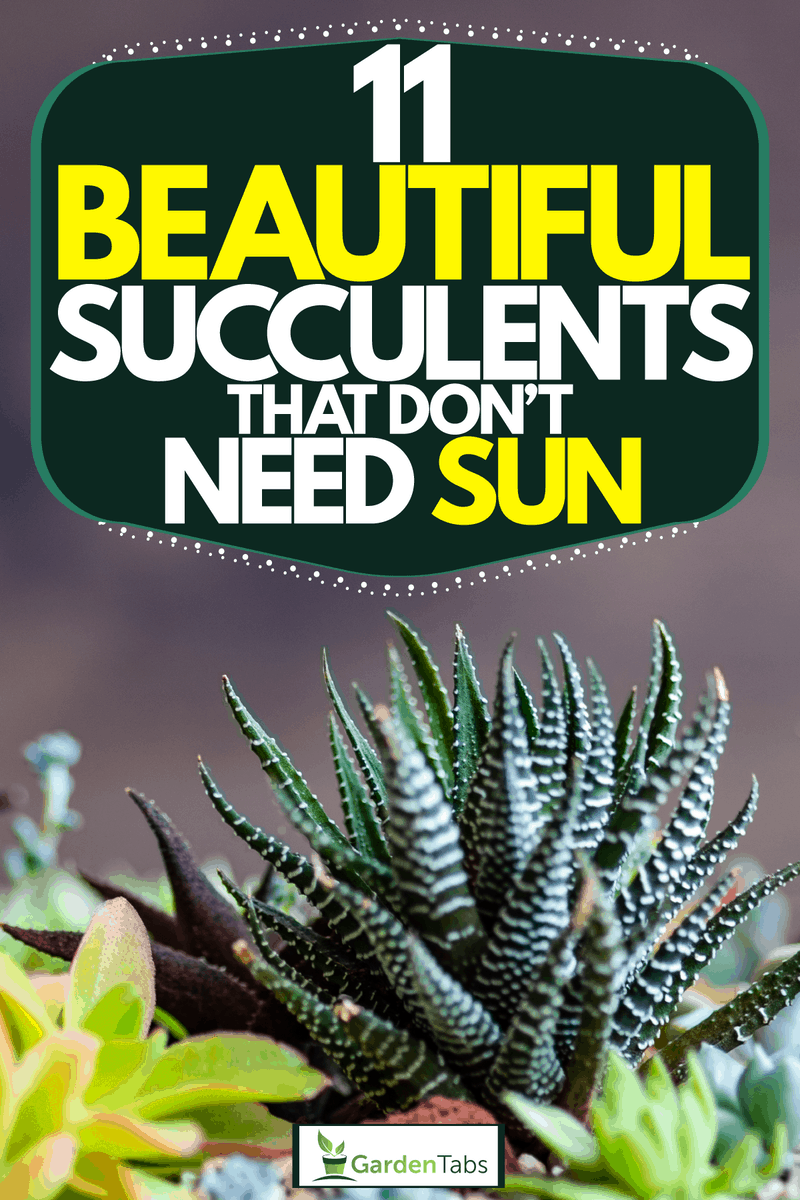Succulents have long been celebrated for their resilience and adaptability, often thriving in harsh conditions with minimal care.
While many adore the sun, a surprising selection prospers without the need for abundant natural light.
Whether you have a dimly lit home or outdoor spaces shielded from sunlight, this article is your guide.
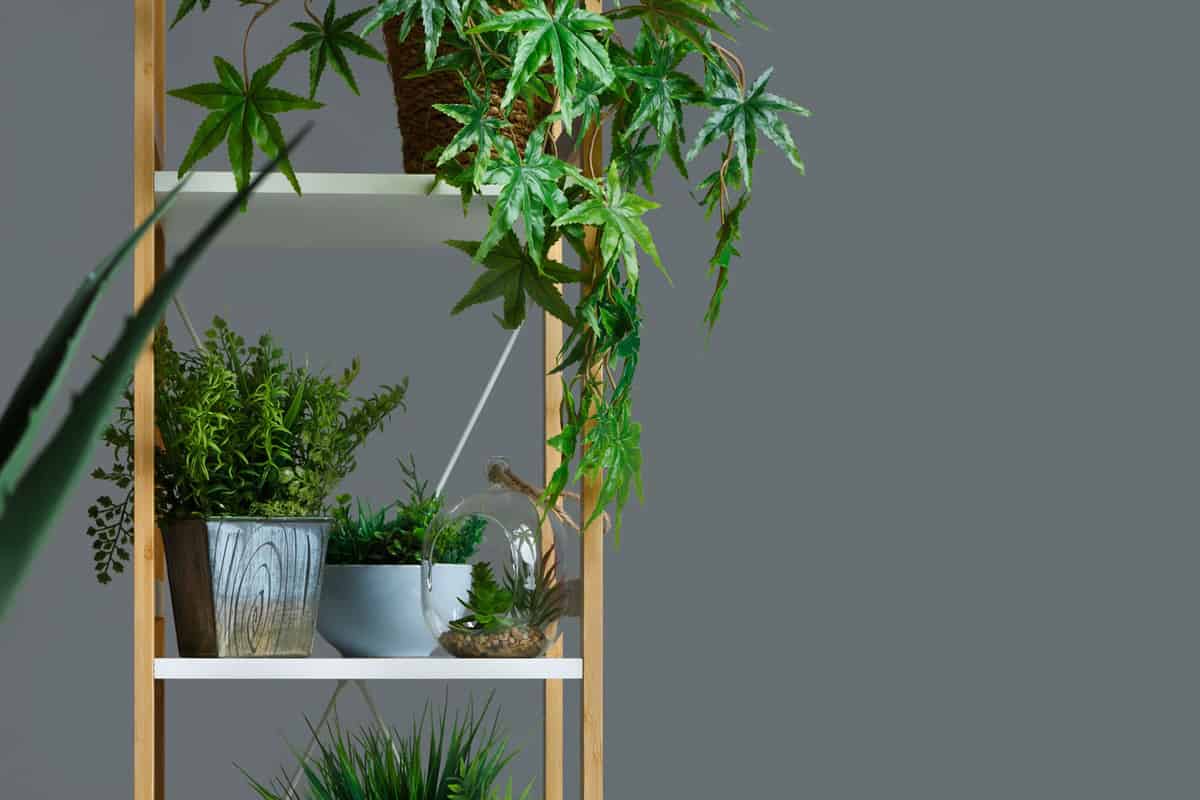
Here's a list of succulents that flourish even in low-light conditions, albeit with artificial lighting.
Beyond just names, we'll provide essential care tips, from soil requirements to growth guidelines.
Read on to discover the perfect sun-shy succulents for your space!
11 Beautiful Succulents That Don't Need Sun
1. Snake Plant (Sansevieria trifasciata)
Also known as Mother-in-law's Tongue, the snake plant is simple to grow indoors or outdoors. It grows in growing zones 9-11.
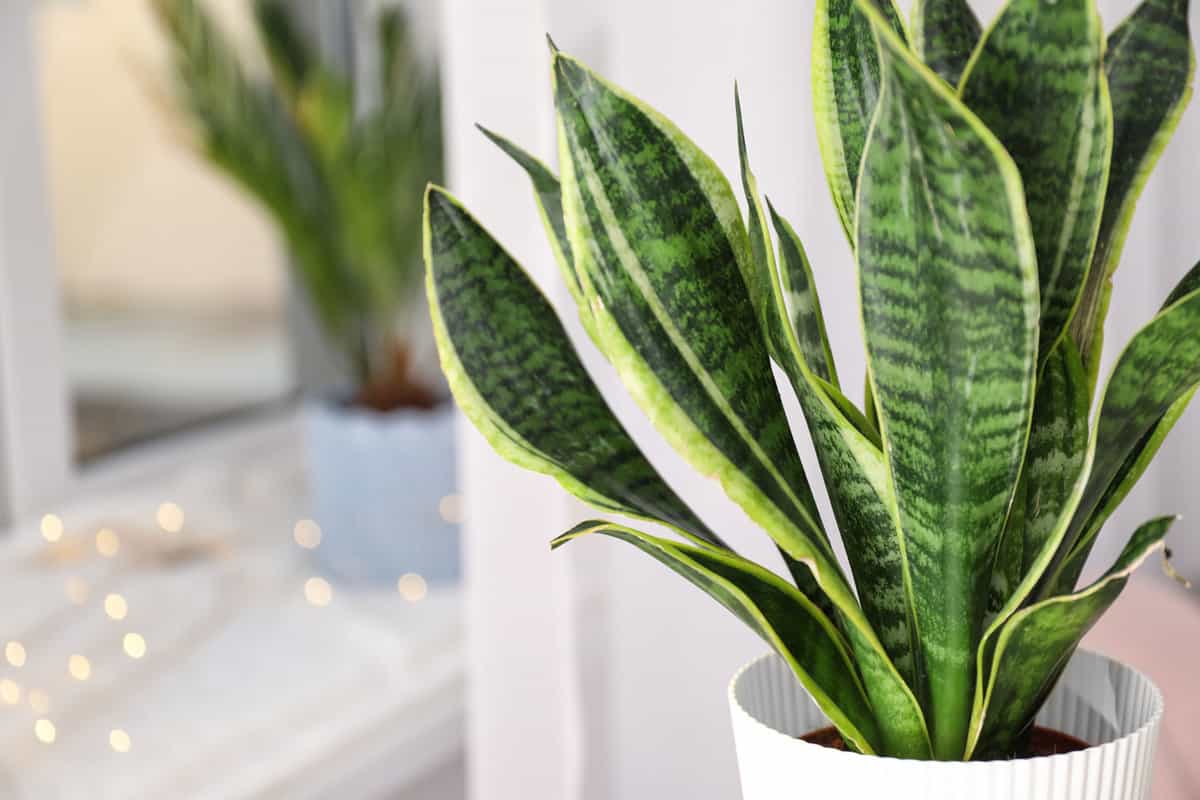
This low-maintenance plant thrives in low-light spaces and doesn't need much natural sunlight to grow.
If you plan to grow it indoors, use a grow light to meet minimal light requirements. Growth will be slower, but it will indeed thrive.
It prefers well-drained soil that is dry for the most part and can thrive in temperatures as low as 70 to 80 degrees Fahrenheit during daytime and 65 to 70 F at night.
Snake plants prefer standard fertilizer in the form of liquid or slow-release pellets.
2. Aloe (Aloe barbadensis)
You may be familiar with this plant, as it's commonly used for medical and skincare benefits.
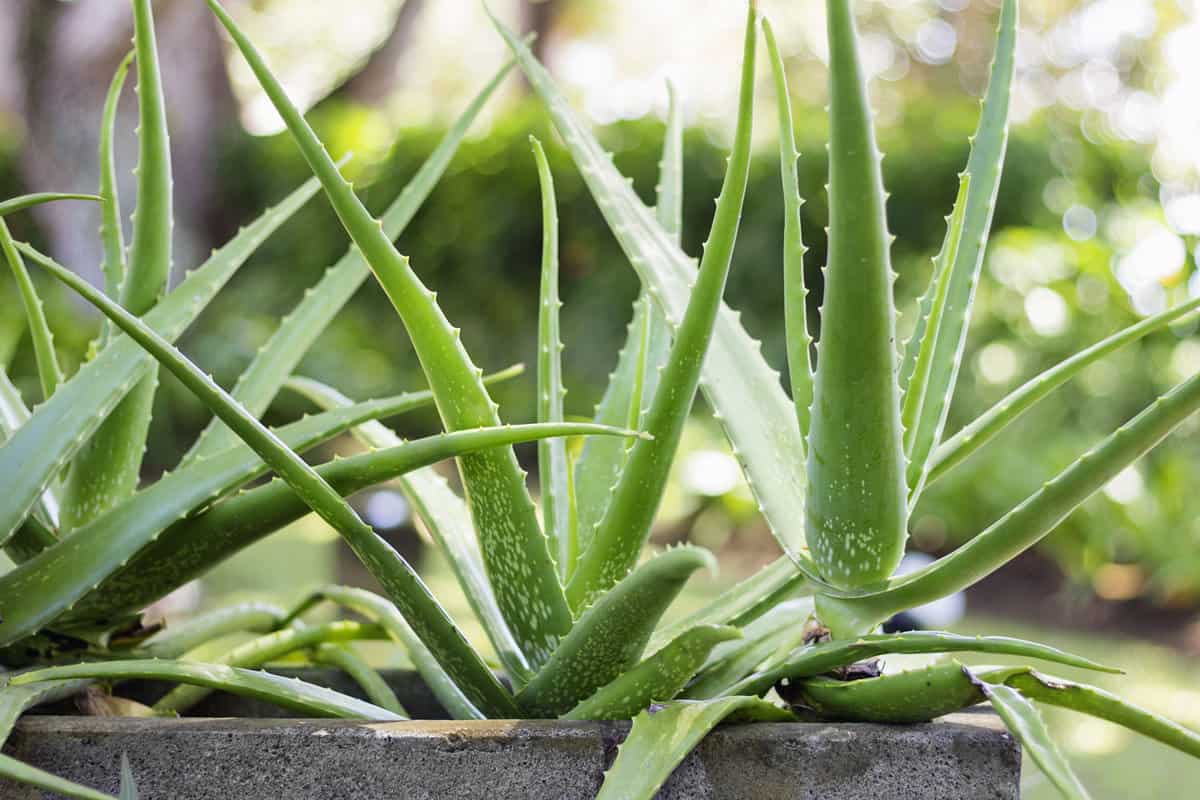
Its thick and fleshy leaves are adept at holding large amounts of water, so you won't have to water the plant often.
It prefers cooler temperatures around 50 to 72 degrees Fahrenheit or growing zones 8-11.
You can use most succulent fertilizers, liquid or granular, on this plant, and it's best to apply them during the summer months when it's growing.
Aloe vera exhibits a remarkable capacity to thrive in low-light environments, making it an excellent choice for indoor cultivation.
While it can adapt to reduced sunlight, providing indirect or filtered light is essential to encourage healthy growth.
If you're growing aloe vera indoors, consider using artificial lighting sources, such as fluorescent or LED grow lights, to supplement the available light and ensure the plant receives the necessary illumination for its well-being.
This adaptability to low-light conditions makes aloe vera a versatile and manageable addition to your indoor plant collection.
3. String of Pearls (Senecio rowleyanus)
It is a distinctive succulent known for its round, bead-like leaves on trailing stems, resembling a string of pearls.
These leaves store water, enabling the plant to tolerate drought. It is ideal for hanging baskets due to its cascading growth. Its unique look and easy maintenance make it popular among indoor plant enthusiasts.
4. Green Ice Hybrid (Gasteraloe)
This plant is another succulent variety that can survive without much sunlight because it prefers low, filtered light.
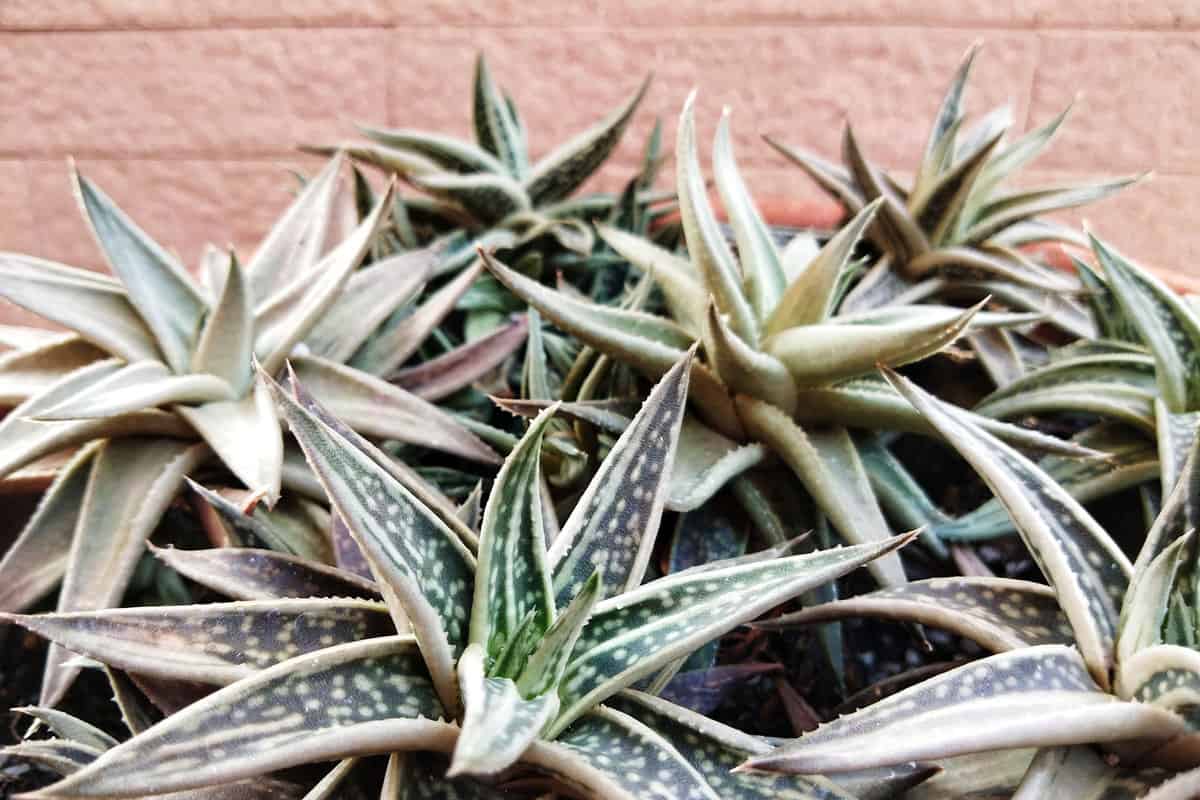
You'll only need to water it sparingly, but be sure to soak it thoroughly when you do.
It's best to water it less in the winter, as it will grow less during these months.
You'll know it's overwatered when its thick, pointy leaves appear on the fan or lamp or when its typical green hue turns yellow or brown.
The green ice succulent grows in growing zones 6-8 and loves well-drained loam or sand for its potting mix.
You can even use a mixture of both in a 1:1 ratio. This small plant makes for the perfect desktop or tabletop plant, and it can help add an exciting appeal to dark shelves, balconies, and patios.
5. Ponytail Palm (Beaucarnea recurvata)
The ponytail palm, scientifically known as Beaucarnea recurvata, is a unique and visually striking plant often mistaken for a palm tree due to its long, slender trunk and arching, strap-like leaves.

Despite its name, it is not a true palm but a member of the Agave family.
It's also commonly called the "elephant's foot" plant due to its swollen trunk base.
Ponytail palm is indeed a succulent, known for its ability to tolerate and grow in low light conditions.
The thick, bulbous base of the ponytail palm stores water, allowing it to survive extended periods without frequent watering.
This water reservoir helps it endure low humidity levels often found in low-light environments.
Ponytail palms are naturally adapted to thrive in bright, indirect light.
However, they can tolerate lower light conditions, including partial shade and artificial light indoors.
They have evolved to make the most of available light without requiring intense sunlight.
Ponytail palms are naturally adapted to thrive in bright, indirect light.
However, they can tolerate lower light conditions, including partial shade and artificial light indoors.
They have evolved to make the most of available light without requiring intense sunlight.
6. Pearl Plant (Haworthia)
Haworthia is a small, rosette-forming succulent native to South Africa. They require infrequent watering, with soil needing to dry out entirely between sessions, and are sensitive to overwatering.
These slow-growing, compact plants are perfect for small spaces and require well-draining soil, typically a cactus or succulent mix. They don't need frequent repotting due to their small root system.
Haworthias, known for their unique leaf shapes and patterns, are non-toxic, making them safe for households with pets, and are often used in decorative settings like terrariums and dish gardens.
They can also be easily propagated through offsets.
7. Jade Plant (Crassula ovata)
Jade plants have oval-shaped leaves with thick, woody stems. These small tree-like plants make for very decorative house plants.

Not only that, but they live for a very long time and can quickly adapt to various environments. It grows in growing zones 10 and 11.
Jade plants prefer warm, dry weather, anywhere from 50 to 80 degrees Fahrenheit, and they should be allowed to dry completely between watering sessions.
Remember that these plants are susceptible to root rot and require well-draining soil to stave off similar fungal issues.
Jade plants grow perfectly in low-light conditions and are pretty resilient overall.
8. Dwarf ox-tongue (Gasteria bicolor var. liliputana)
This small plant has chubby dark green leaves that contain raised white bumps.
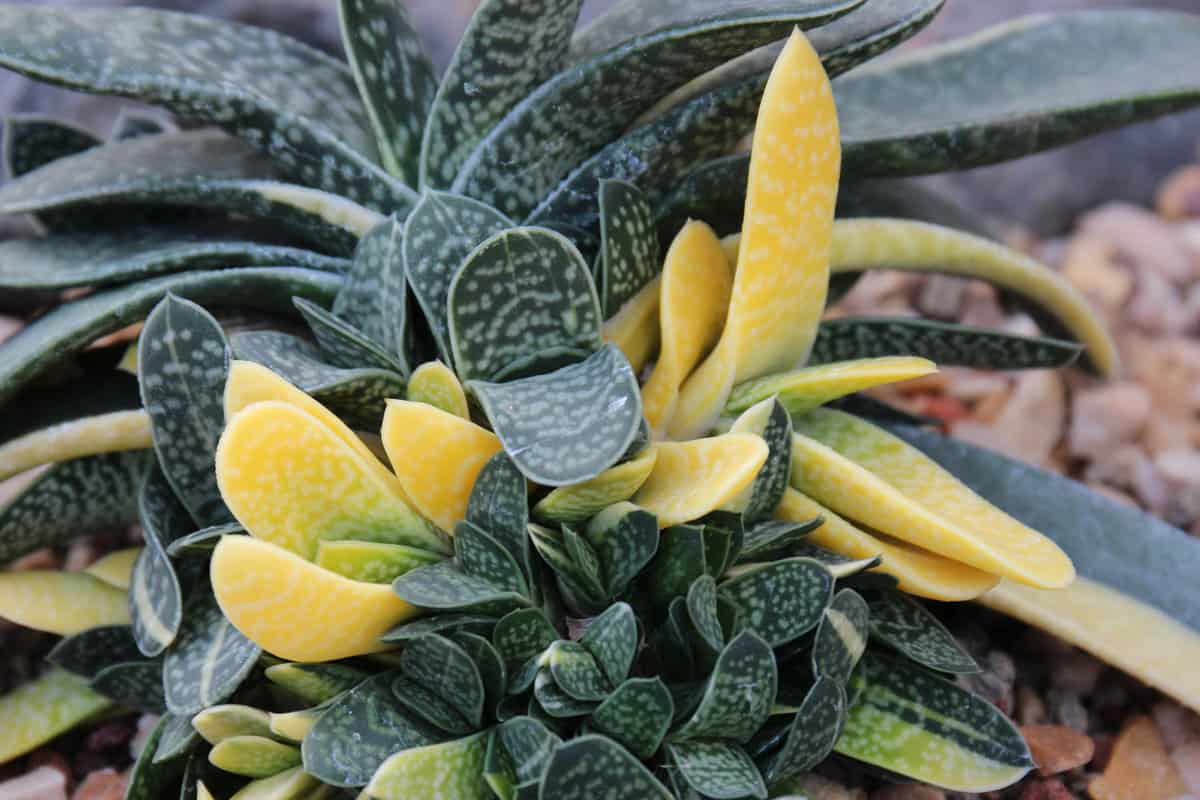
Though it is a relatively slow-growing plant, it can make quite an attractive display once the offshoots grow.
Initially, you'll need only a four-inch pot to grow this succulent, and you can grow it in filtered or low light.
You don't need natural sunlight. It's best to let the plant dry out between waterings; however, you only need to water it approximately two to four times a month.
Well-drained soil with sand or rocks helps keep this plant thriving, and it's perfect for offices or bedrooms. It grows in growing zones 9-11.
9. Happy Bean (Peperomia Ferreyrae)
The Happy Bean plant, scientifically known as Peperomia ferreyrae, is a charming succulent native to arid regions in Peru.
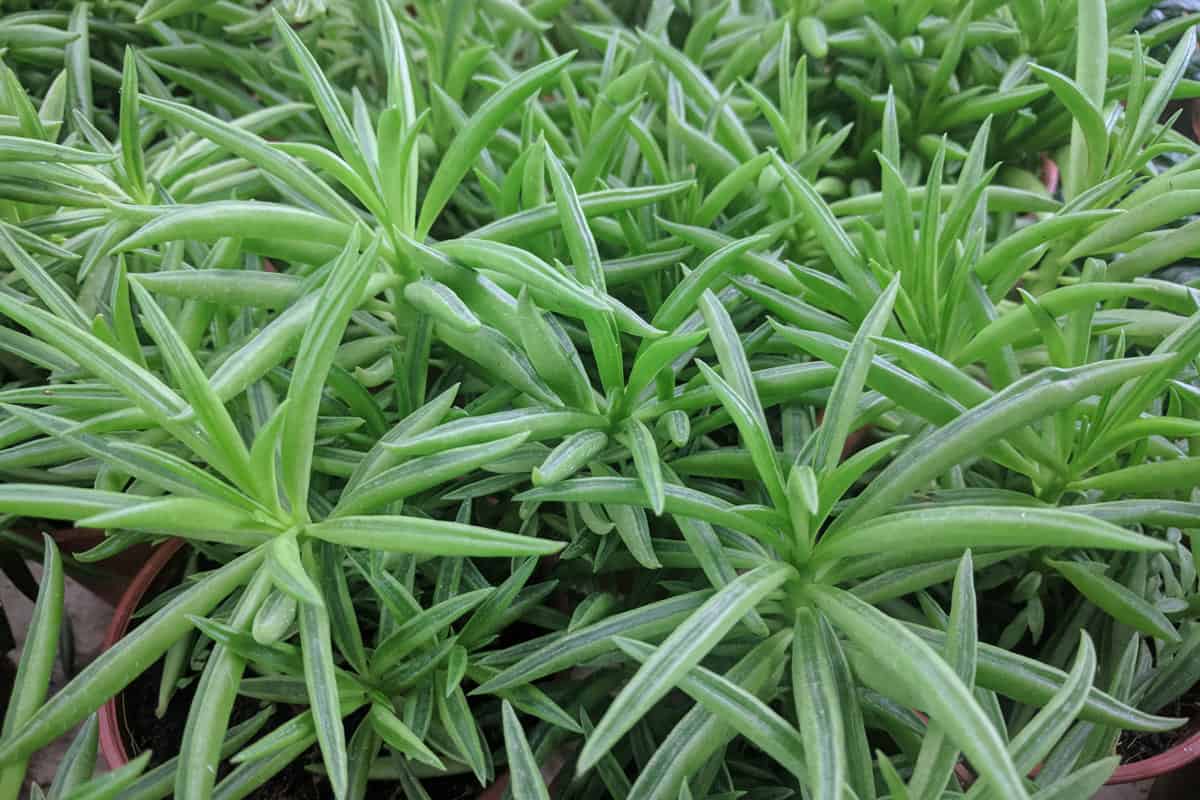
Due to its unique appearance, this delightful houseplant, often called the "Pincushion Peperomia," can tolerate and thrive in low light conditions.
These plants have a compact growth habit, with slender, upright stems.
Their compact size and ability to adapt to lower light levels make them perfect for small spaces and shelves where brighter light may be scarce.
Peperomia ferreyrae is relatively low-maintenance, requiring infrequent watering and minimal care.
10. Ice Plant (Delosperma cooperi)
Ice plants, belonging to the Delosperma genus, are succulents recognized for their drought tolerance and vibrant, daisy-like flowers. These plants store water in their thick, fleshy leaves, enabling them to thrive in arid conditions.
Commonly used as ground covers in rock gardens and for erosion control, they grow low to the ground and spread outward.
11. Burro's Tail (Sedum morganianum)
Burro's Tail is a succulent known for its distinctive trailing stems and teardrop-shaped leaves, making it popular for hanging baskets and indoor decor. This plant stores water in its fleshy leaves, allowing it to endure dry periods.
Its unique, cascading appearance adds an attractive element to indoor spaces.
Enjoy Greens Even With Limited Sunlight
These beautiful succulents prove you can enjoy greenery and natural beauty even in spaces with limited sunlight.
Their remarkable adaptability to low-light conditions and unique appearances make them excellent choices for homes, offices, or any environment where sunshine is a precious commodity.
With the proper care and attention, you can cultivate a thriving succulent garden that adds a touch of nature's charm to your low-light spaces all year round.
We hope this post has given you enough options to consider if you're looking for a succulent plant that doesn't require much sunlight.
Before you go, be sure to check out our other posts:
17 Indoor Winter Plants That Bloom With Gorgeous Flowers
14 Bathroom Plants That Absorb Moisture And Reduce Humidity
And if you're on Pinterest, do help us share this article! You can use this awesome image below as a pin!
